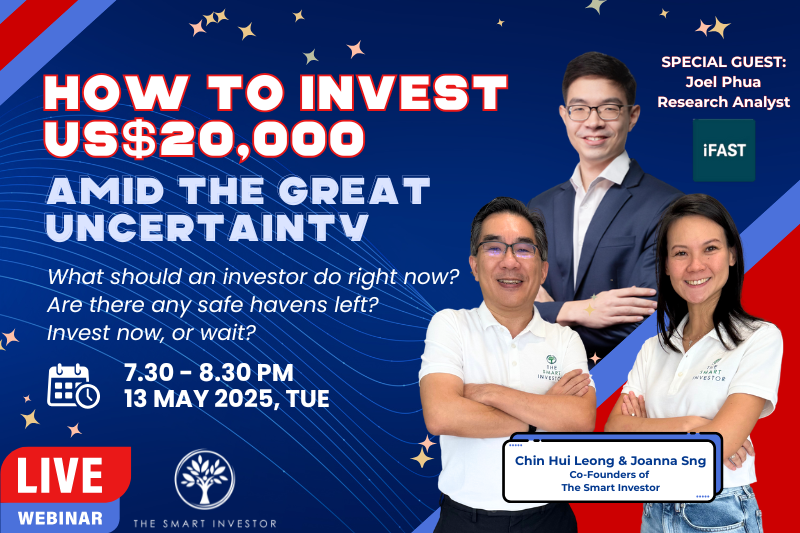Dividends are a form of passive income enjoyed by investors as a result of their stock’s good business performance.
Some investors may opt to spend their dividends, as they consider it as a form of “bonus” which they can use on entertainment or travel.
Others may choose to save their dividends in their bank account, thereby bolstering their emergency funds.
But beyond that, you can also use what you receive in dividends to generate more income.
What I would do though, is to park these dividends in a separate account known as an “opportunity fund”, which can be used for further purchases of even more dividend stocks.
This is a concept known as “compounding“, and if you do it right, you could be on your way to an early retirement.
Reinvesting your cash dividends
Let’s look at a hypothetical scenario where a real estate investment trust (REIT) pays out a dividend of S$0.05 per unit.
An investor who owns 10,000 units of the REIT would receive a dividend of S$500 a year.
Assume too, for simplicity’s sake, that the share price of the REIT is S$1.
If the investor used the full S$500 dividend to purchase shares in the REIT, he would then end up with a total of 10,500 shares (S$500 / S$1 = 500 units + existing 10,000 units).
The following year, the investor would receive a dividend of S$525 for his new unit-holding of 10,500 shares (assuming the same level of dividends per share of S$0.05).
If he were to reinvest it by buying units in the REIT again, he would have added 525 additional units (assuming the unit price remains unchanged at S$1).
Through this simple example, the investor has managed to generate more dividends through the reinvestment of his yearly dividend.
Compounding through scrip dividends
Some companies have a scheme that pays out dividends in the form of shares, known as “scrip”, rather than in cash.
Investors have the choice as to whether they would like to receive their dividends in cash or scrip, or a combination of both.
The good thing about scrip is that it is typically issued at a discount of 5% to 10% off the volume weighted average price (VWAP) of the shares traded in the last few days.
Existing shareholders will have the advantage of being able to “buy” these additional shares at a lower price than if they had taken the cash and used it to buy shares from the open market.
Scrip works the same way as the cash dividend reinvestment, as it slowly but steadily increases your shareholdings over time, allowing the investor to receive growing dividends.
Examples of companies that offer this option include banks such as DBS Group (SGX: D05) and OCBC Ltd (SGX: O39).
Subscribing for value-accretive rights issues
Some REITs announce preferential offerings, a form of rights issue, where existing unitholders can opt to subscribe for new shares at a discount to the last traded share price.
By purchasing additional units in the REIT, unitholders can increase their stake in the REIT, hence increasing the dividends they obtain from the REIT moving forward.
Unitholders should keep a lookout for preferential offers that are value-accretive (i.e. they result in a higher overall distribution per unit even after factoring in dilution).
Such offers provide a double benefit — it allows unitholders to buy additional units at a discount while also enjoying a bump up in distributions from the REIT.
Get Smart: Get rich slowly
The above three methods are what I will term effective and proven methods to “get rich slowly”.
By compounding our dividends over time, we let our dividends generate even more dividends for us.
If this is carried on over years and decades, you will end up with a significant pot of money that will allow you to enjoy a blissful retirement.
Want to stay abreast of the latest investing news, analyses, and stories for FREE? Subscribe to our weekly email, Smart Reads, now to receive a curated list of our top articles weekly. CLICK HERE to subscribe now!
Follow us on Facebook and Telegram for the latest investing news and analyses!
Disclaimer: Royston Yang owns shares of DBS Group.




